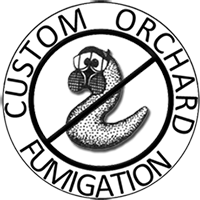Pest Prevention: Building Resilient Soils to Minimize Pest Pressure on Farms
Pests are one of the greatest challenges faced by farmers worldwide. They can cause significant damage to crops, leading to substantial economic losses and decreased productivity. While pesticide use is a common approach to controlling pests, it is not always effective and can have detrimental effects on the environment and human health. Therefore, it is crucial to explore alternative strategies for pest prevention. One such approach is building resilient soils, which can help minimize pest pressure on farms. In this blog post, we will discuss the importance of resilient soils and some strategies that farmers can adopt to build them.
Understanding Resilient Soils
Resilient soils refer to soils that have a high capacity to withstand disturbances and rapidly recover their functions. They are characterized by their ability to support healthy plant growth, sustain microbial activity, and suppress potential pests. Resilient soils have higher levels of organic matter, beneficial microorganisms, and diverse biological communities, which contribute to their ability to resist pest pressure. By focusing on soil health and building resilient soils, farmers can create an environment that is less favorable for pests, reducing the need for chemical interventions.
Improving Soil Health to Reduce Pest Pressure
1. Incorporating Organic Matter
One of the key components of building resilient soils is increasing organic matter content. Organic matter improves soil structure, water-holding capacity, and nutrient availability, creating a favorable habitat for beneficial organisms and plants. Increasing organic matter can be achieved through practices such as cover cropping, crop rotation, and applying organic amendments like compost or manure. These practices not only help build resilient soils but also promote biodiversity, enhancing natural pest control.
2. Enhancing Soil Microbial Activity
Microbes play a vital role in maintaining soil health and suppressing pest populations. To enhance microbial activity, farmers can adopt practices that promote microbial diversity and abundance, such as minimizing tillage, avoiding excessive pesticide use, and incorporating cover crops. These practices create a conducive environment for beneficial microbes, which can outcompete harmful organisms, reducing pest pressure naturally.
3. Implementing Integrated Pest Management (IPM)
Integrated Pest Management is an approach that combines multiple strategies to manage pests in a holistic and environmentally friendly manner. By integrating various techniques such as cultural practices, biological control, and targeted pesticide application, farmers can effectively control pests while minimizing the negative impacts of chemical treatments. Resilient soils play a crucial role in IPM by reducing pest damage and enhancing the effectiveness of natural enemies in pest control.
4. Encouraging Natural Pest Predators
Building resilient soils can help attract and sustain populations of natural enemies, such as predatory insects, birds, and beneficial nematodes. These natural predators play a vital role in pest control by feeding on pests, keeping their populations in check. By providing habitat diversity, including hedgerows, native plants, and cover crops, farmers can create an environment that supports natural predator populations, reducing reliance on synthetic pesticides.
5. Monitoring and Early Detection
Regular monitoring of the farm and early detection of pest populations are crucial steps in preventing pest outbreaks. By implementing monitoring programs and using techniques such as pheromone traps, farmers can detect pest populations before they reach damaging levels. Early detection allows for timely intervention and helps prevent pest outbreaks, reducing the need for extensive pest control measures.
Conclusion
Building resilient soils is an essential approach to minimize pest pressure on farms. By focusing on soil health, farmers can create an environment that supports natural pest control mechanisms and reduces reliance on chemical interventions. Incorporating organic matter, enhancing microbial activity, implementing integrated pest management, encouraging natural pest predators, and practicing monitoring and early detection are all effective strategies to build resilient soils and prevent pest outbreaks. By adopting these strategies, farmers can promote sustainable agriculture, enhance biodiversity, and reduce the negative impacts of pests on their crops.
